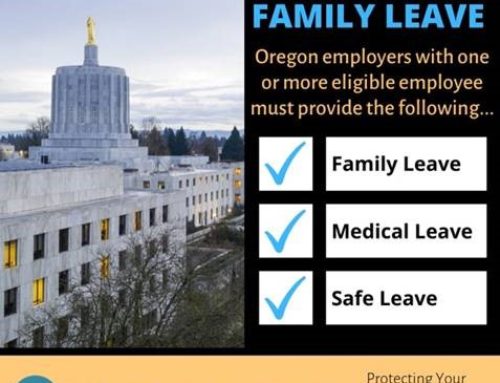Just a few weeks ago in Oregon, the Governor signed into law the most aggressive series of increases to the minimum wage seen in the U.S. so far. Beginning in July of this year and continuing through 2022 – certain areas of our State will be seeing increases towards the six-year march towards $15 per hour – causing quite a bit of concern in the business community.
Absent a change in the law, this is going to happen and as business owners we need to anticipate how this mandated increase will affect our costs, pricing, customers and workers.
While price increases are an option, let’s instead focus on two areas that you may not have considered in this debate: salary compression and how to respond with cost reductions.
Salary Compression is a fancy HR term for people at the high end of your pay scale thinking they deserve a raise too. It’s a fact of human nature that as the lowest paid workers are paid more the higher paid ones see the gap between their wages as shrinking – diminishing their sense of what’ they’re worth and creating an environment where they want more as well.
So not only do you need to consider how you’ll pay higher wages to your lower skilled workers but also contain cost pressures on the upper end of your pay scale.
As business owners, we need to expect this type of friction and consider how we’ll respond to maintain company morale while being able to afford keeping our best workers. This is where a pause and evaluation of costs should happen.
With cost reductions we’re simply looking for ways to pay the wage demands that are coming from the government and your workforce. As some broad options consider:
- Outsourcing – Bookkeepers, janitors, and other roles are readily outsourced functions that can help you cope with the cost of rising wages if you currently have people handling those roles in house. While this may be uncomfortable for many, it really is the low hanging fruit of your available options and often produces significant savings.
- Eliminate Need for Position or Stop Doing the Work – You may have always had that role in your company but ask yourself – in tight times is it a convenience or do you really need it? Consider also, how critical the service is? Is it making you money? Could an outsourced provider do it for you? Or is it time to think differently and focus on what does generate profits?
- Workforce Reductions – By this we simply mean you have one or two fewer people performing essential functions – be they mechanics, customer service or accounting – it really doesn’t matter the role. It’s important on this option to be able to demonstrate how you arrived at decisions on who was let go. Make sure you get assistance especially from your attorney or HR professional if you’re dealing with employees that fall within a government recognized protected class.
- Price Shopping Bigger Ticket Services – If you haven’t shopped key services in more than two years it’s time to re-evaluate and see if there’s a better deal. Consider these areas for review:
- Business and Health Insurance – markets shift, new players leave and enter a market and some simply aren’t interested in your business anymore. Pricing these two big ticket items with a trusted independent insurance agent, is simply a smart move to make sure your price and coverage are in your best interests as well as up to date
- Merchant Services – Let’s just admit that this industry has a poor reputation and you’re likely already getting bombarded by calls promising to save you money. Regardless if you like your current broker or provider, there are significant hidden costs to these services that should be reviewed to make sure you’re getting the best deal for you.
Hint: if you haven’t seen an invoice in months or no one’s helping you understand and migrate to a chip enabled system – that’s a warning sign that you’re likely paying too much and can do better. - Unemployment Insurance Rates – your State unemployment rate is set each year based on your turnover and claims against your account. While people will always come and go for many reasons, looking at your hiring practices for clarity, consistency and general best practices can begin to lower those costs to the tune of several hundred to several thousand dollars per year. Again, in this case, it’s best to contact your attorney or an HR professional for guidance on the best way to proceed.
The next six years are going to challenge the resourcefulness of all business owners and it’s time to start evaluating your options and putting plans into motion. Vantage Point can help you directly through evaluating your current hiring and pay practices along with introductions to reputable services that can provide you additional options and potential savings.
Good luck out there.
Tom







